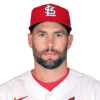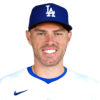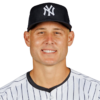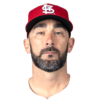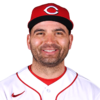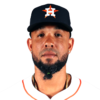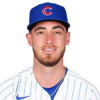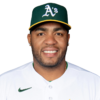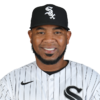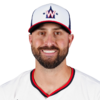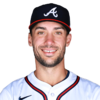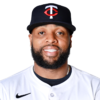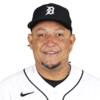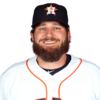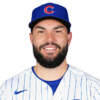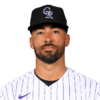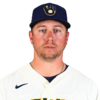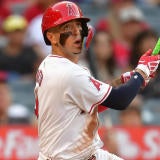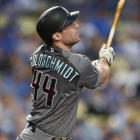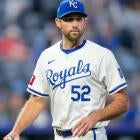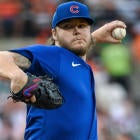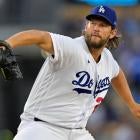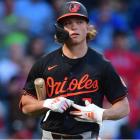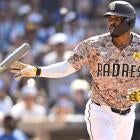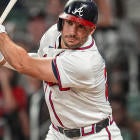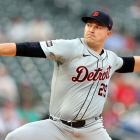First base is shallow now.
You may have heard this take at some point this year, and it's not entirely wrong. Sure, there's still an abundance of usable options, if that's your standard, but the same is true for most infield positions.
Mostly, it's weaker at the top. Some of the tried-and-trues are getting long in the tooth, and there hasn't been a new crop of elites to replace them. But it's a position that ages gracefully, where being on the wrong side of 30 is hardly a death knell, so it'll still be well represented in the early rounds of next year's drafts.
No, the challenge when ranking this position isn't finding names to fill out the 20 spots. It's organizing those names in a way that's meaningful and defensible. The position features a lot of the same thing, at least in terms of ceiling and floor and likelihood of achieving each, which leaves me to agonize over what makes No. 7 so much better than No. 13.
But that's why they pay me the big bucks, right?
Paul Goldschmidt dug himself into a deep hole with a May so disastrous there were whispers his bat had slowed beyond repair, but the passage of time led him to more or less the same numbers he's always had, with a typical batted-ball profile and strikeout-to-walk ratio. OK, so he's not running anymore, which takes him out of the Mike Trout class of hitters, but he's still a borderline first-rounder.
Freddie Freeman became the de facto No. 1 first baseman when so many others disappointed at the start, but in the end, it was he who underachieved, reverting to the line drive-oriented approach from earlier in his career after enjoying some power gains the previous two years. That's not altogether a bad thing — he's as safe as it gets for batting average — but he probably doesn't belong in the first-round discussion.
... Which means Anthony Rizzo doesn't either even though he did a fine job salvaging his season in the second half. Of course, he'll never fall too far outside of the elite in points leagues because his plate discipline is so good. Judging by his batted-ball profile, 30 homers should still be considered the norm for him, but given that he's not a true standout in anything else, it doesn't merit an especially heavy investment in categories leagues, especially knowing the sort of numbers you can find later at the position.
Tell me the version of Matt Carpenter we're going to see in 2019, and I'll give you a more confident ranking. The one I've chosen straddles the line between the MVP candidate of 2018 and the injury-riddled curiosity of 2016 and 2017. As good as his quality of contact is, combining elite hard-hit, fly-ball and line-drive rates, you have to consider he'll be 33 and as liable to play through nagging injuries as ever next year.
In what's a totally believable self-assessment given Joey Votto's proactive and forward-thinking approach to hitting, the 2017 NL MVP runner-up explained his disappointing 2018 to MLB.com in early September by saying he had prematurely made adjustments to compensate for a skills decline that didn't actually come. And it's true: He traded off fly balls for line drives in way that adversely impacted his numbers. September ended up being one of his better months, so we shouldn't dismiss him as old yet, especially since his plate discipline was as good as ever.
Jose Abreu spent most of 2018 contending with a substandard BABIP, and then when it showed signs of correcting early in the second half, he wound up needing emergency surgery for testicular torsion (which doesn't sound good). He's getting up there in age, set to turn 32 this offseason, but every aspect of his batted-ball profile was normal in 2018. And I suspect without the interruption, his overall numbers would have gotten there, too.
It's difficult to pinpoint exactly what went wrong for Cody Bellinger in 2018. He just didn't homer as often, which sounds overly simplistic, but variations in home run-to-fly ball rate aren't so uncommon, really, for players as young as he is. You have to remember he hit nearly 40 homers as a 22-year-old in 2017, and there's no reason to believe it was a fluke, judging by the batted-ball profile. Chalk it up to growing pains.
Yes, there's some doubt in my mind the Brewers will enter 2019 totally content with Jesus Aguilar as their everyday first baseman, especially since Eric Thames and Ryan Braun will both still be under contract, but he's the real deal, performing equally against lefties and righties with an elite line-drive rate and power production that has now been proven two years over. His second half was worse than the first, but the underlying numbers didn't reveal anything scary.
So far, Edwin Encarnacion's decline has been about as gradual as they come, gently lowering him from a place of Fantasy stardom to ... whatever's just below that. He had some awful batted-ball luck in 2018, too, so while the walks and strikeouts continue to trend the wrong way, the overall step back may not be as great as it appears. Still, another has to be expected in his age-36 season.
Though it was obscured by the fact he didn't play as regularly, Joey Gallo actually had a respectable batting average in the second half thanks to something like a league-average BABIP. The key was a greatly improved line-drive rate, which came at the expense of some fly balls. But that's a tradeoff Gallo can afford and will need in order to take the next step in his development. If he can be just a .240 hitter, he'll be a big-time contributor in Fantasy.
Jurickson Profar might have been the game's unluckiest hitter this year, which is saying something considering it was by all accounts a breakout season for a player once considered the top overall prospect. But if it seems like the batting average was too low for as rarely as he strikes out, that's because, yeah, he had a low BABIP — one that can't be explained by his line-drive or fly-ball rates, which were both normal. You're probably not drafting him to play first base, but the 25-year-old should be drafted at about this point among first basemen, his arrow firmly pointed up.
This ranking will require the Dodgers to get their heads out of their you-know-whats and recognize what they have in Max Muncy, who was their best hitter going into the All-Star break and would have the highest point-per-game average among first baseman if we only included the month and a half when was getting everyday at-bats. And he should have kept getting them seeing as his numbers were just as good against lefties as righties, but someone had to suffer from the Dodgers acquiring both Manny Machado and Brian Dozier at the deadline. They're both free agents this offseason, though..
Maybe the difference between Bellinger at No. 7 and Matt Olson here is little more than perception. They're of a similar age and experience level, both having disappointed in their sophomore seasons but in a way that didn't betray their power-hitter profile. So why the discrepancy? Well, Bellinger is a year younger and was considered the higher-end prospect, but it probably says something about the five in between — as in they should all be drafted in quick succession.
Carlos Santana remains the hitter with the greatest disparity between his categories- and points-league value. With his superior plate discipline, you could make the argument he belongs as high as 10th on this list in points leagues, but as first basemen go, he's only an average home run hitter and never much help in batting average. Owners in traditional 5x5 leagues might not even take him as high as 14th.
It's fair to say Miguel Cabrera won't be a hot commodity after following up his 2017 nosedive with a 2018 almost entirely forfeited to injury, but there's reason to believe the future hall of famer can still make a significant Fantasy impact at 36. For one thing, he played with two herniated disks in 2017, which no doubt impacted his performance, and for another, he continues to make some of the hardest, loudest contact of any hitter, sort of like we said about Matt Carpenter before he finally turned it on this summer.
It's still possible — maybe even likely — that the Yankees bring in a higher-profile first baseman this offseason, not wanting to put all their eggs in the basket of a 28-year-old organizational depth type who happened to validate their hunch after they acquired him from the Cardinals at the trade deadline. But Luke Voit's performance was so monstrous (and ended on such a high note with seven homers in his final 11 games) that there's at least a chance he gets the first crack. His opposite-field pop seems perfectly suited for Yankee Stadium, after all.
Too aggressive? Maybe. But in his most extended look as a major-leaguer since early in 2016, Tyler White maintained an OPS near .900, pushing aside all other challengers in what was a crowded Astros lineup. He did it with a high walk rate, a typical BABP and a minor-league track record that supported it all. Of course, then the Astros shied away from him in the postseason, clearly preferring Yuli Gurriel, so hopefully the offseason will provide some clarity.
Eric Hosmer had been a reliably boring Fantasy option prior to 2018, during which he delivered what was probably his worst-case scenario a year after delivering his best-case scenario. Plagued by one of the lowest fly-ball rates in the league, he's no threat for 30 homers, but he showed better in that area in years past than he did in his first year for the Padres. His swing is also predisposed to a higher-than-average BABIP that we didn't see in 2018.
Rotisserie league owners in particular will be motivated to draft Ian Desmond, who fortunately plays in a home park that can forgive his glaring shortcomings. The guy puts so many balls on the ground, a tendency that only got worse upon joining the Rockies, that it's a wonder he can hit 20 homers still. Maybe him doing so in 2018 was a fluke that'll never happen again, but because he's also a reasonable bet for 20 steals, he'll be worth a roll of the dice in formats where they're coveted.
In the end, Justin Smoak's 38-homer 2017 will go down as his career year, but he wasn't a total dud in 2018, his on-base skills helping him make up for a notable drop in power. In fact, it's those walks that would move him ahead of Desmond in a points-league scenario. We'll see if a newcomer like Rowdy Tellez poses any sort of threat on a rebuilding club.


